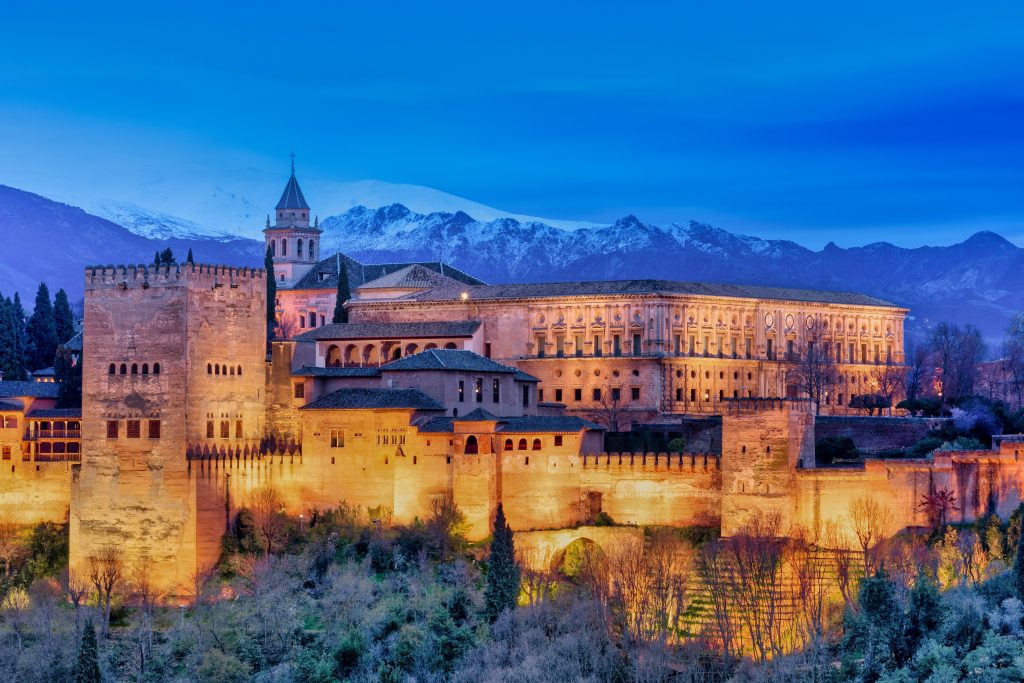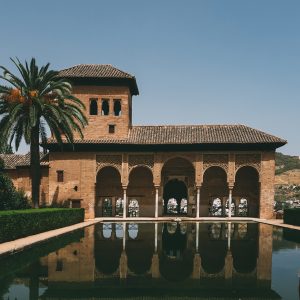Lesson Plans
Drama in Sierra Nevada
Drama en Sierra Nevada
- Spain
- Earth
- B1
Warming Up
Look at the picture and write 5 adjectives to describe what you feel when you see the painting. (You can use a dictionary if you cannot find the right words)
How do you think the characters in the painting are feeling? What might they be thinking? Please describe:
Do you think they can escape the situation? Please describe:
Vocabulary
Cultural Heritage
Listening
Listen to a sentence from the Cultural Heritage text and answer the following questions…
…In ancient times, stories about angry gods and goddesses were accepted as facts when people had no scientific explanations for natural disasters. In fact, all pagan religions in Europe believed in the presence of gods in the natural world. Gods were good and bad at the same time, for example the element earth was associated with the idea of life and things growing on the one hand, and with death on the other…
…Not all gods and goddesses were bad. Berchta, for example, was a Germanic goddess who protected babies, children and women. However, as time went on and the Christian Church arrived, a war began against the pagan traditions. Since the only way to convert the pagans to Christianity was to scare them, many goddesses like Berchta were turned into witches…
Read the story
Instructions: First look at the title of the story and then read the first sentence of each paragraph to get a general idea of what it is about. Then read the whole text.
“Drama in Sierra Nevada”
“Drama in Sierra Nevada” echoes popular Granadan stories of terrible events where people get lost in snowstorms or travellers crossing the Sierra Nevada mountains are attacked by scary creatures.
Many societies have images that include mysterious landscapes. In fact, for many years people have thought that forests are places where fantastic creatures live. Moreover, according to the stories, these creatures protect the forests from humans. These creatures have their origins in fantastic stories that are meant to explain natural events or warn people of the dangers of the unknown.
It is obvious that the mysterious landscape of Granada and Sierra Nevada provide the perfect setting for fantastical creatures to live in, and thus for the legends and stories of this region to exist. For example, the belief in the existence of a monster that causes snow avalanches and buries mountain climbers underneath it. The name of this figure is “El mono careto” (monkey face), a kind of monster with the appearance of a monkey.
Muñoz Degrain, the painter of the “Drama in Sierra Nevada”, was probably influenced by these fantastic stories. Although there are no fantastic monsters in the painting, real monsters appear: wolves …
Reading Comprehension
Grammar
Look at the photo, what city is that?

It can’t be Paris.
Is it a city in Europe? How sure are you?
Yes, it may be a city in Europe but I am not sure.
Is that a castle?
We won’t leave you in doubt any longer. The city is Granada, Spain. The palace/castle is called “La Alhambra” and the mountain range behind it is Sierra Nevada.
Did you know that in English there are specific verbs to express how sure we are about something? These are called modal verbs. Continue reading to learn more…
—
Modals of deduction – must, might, may, could, and can’t
We use modal verbs of deduction to guess if something is true or not and to express how sure we are about possibility.
For example:
To talk about a possibility in the present, in the future and in general, we use: may/might/could
Elena may/might/could be at the cinema, but I am not sure.
When we are certain ( sure ) that something is true, we use “must”.
Life in London must be stressful.
If we are sure something is NOT true, we use “cannot” or “can’t”.
Life in London can’t be easy.
Look at the following table:
DEDUCTION (deduct in real time)
PRESENT
| MUST + be | Very certain (100%) |
|---|---|
| MAY/MIGHT/COULD + be | 50/50 possible |
| CAN’T + be | Very certain NOT (100%) |
Now it’s time to practice:
Read these facts and after that, fill in the blanks. (Use modals of deduction).
- Granada is a Spanish city, capital of the province of the same name in the autonomous community of Andalusia, Spain. It is a very touristic city and one of the most popular destinations for European university students under the Erasmus programme.
- After the Alps, Sierra Nevada is the highest mountain range in Western Europe.
- Until it was listed as a Monument in 1870, the Alhambra was, among other things, a palace for the Muslim Nazari dynasty, a Christian royal residence and a military fortress. The Alhambra is the most visited monument in Spain.

Additional activities
- Visit the British council’s Grammar resources: Modals – deductions about the present | LearnEnglish (britishcouncil.org)
Extra resources for learners
- Check out this video about the city of Granada: Granada in Spain: City Tour by a Local | Alhambra, Sierra Nevada and Flamenco | Meet a Local – YouTube
- Find out more secrets about Granada: The hidden world beneath the ancient Alhambra fortress – BBC REEL – YouTube
- Plan your visit to the Alhambra: Alhambra and Generalife – Patronato de la Alhambra y Generalife (alhambra-patronato.es)
- Art in Granada and Granada in art: https://artsandculture.google.com/story/NwUhTibXBXk0Kw
